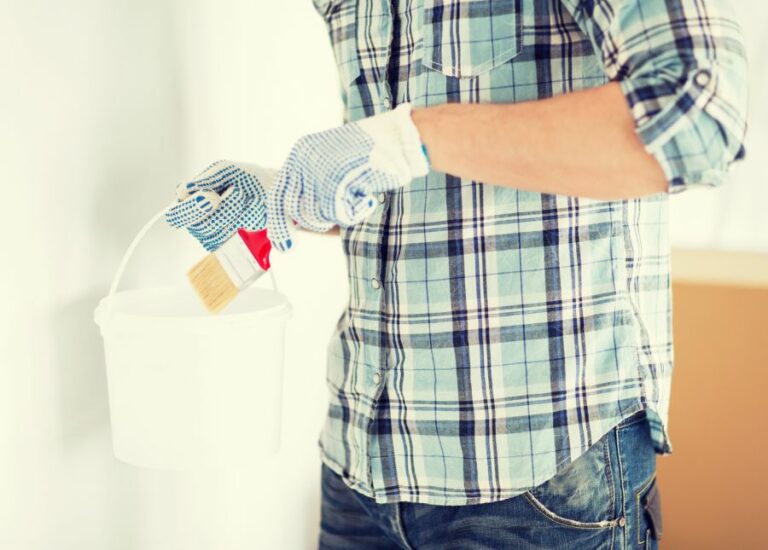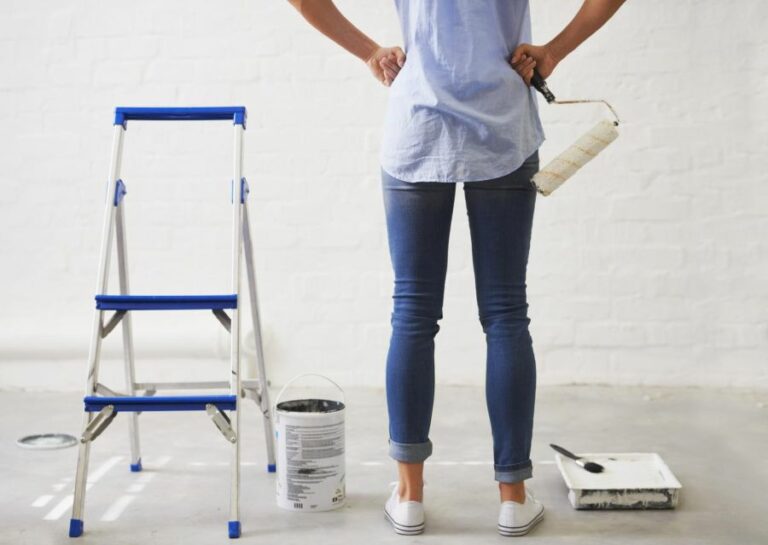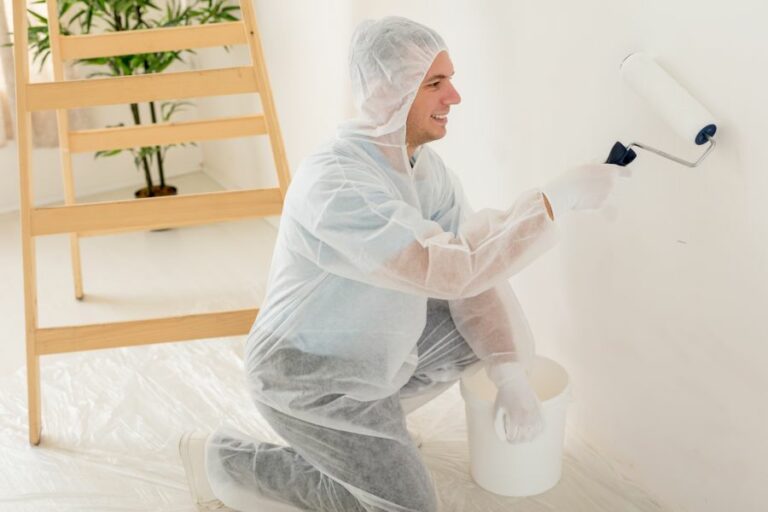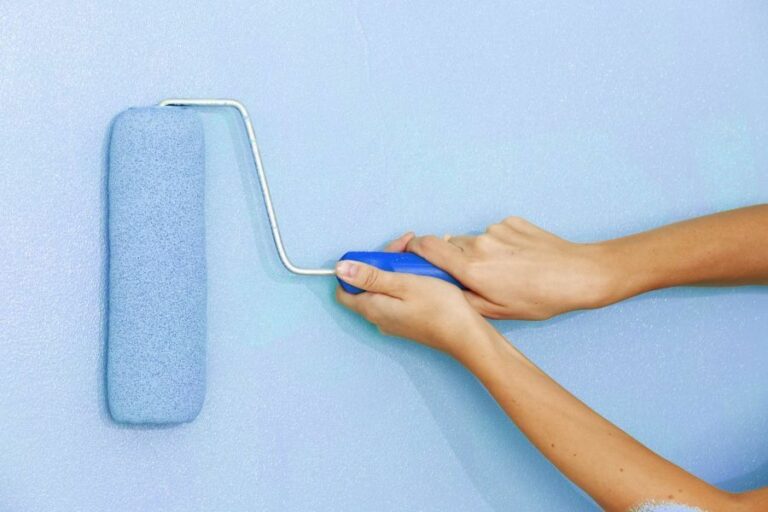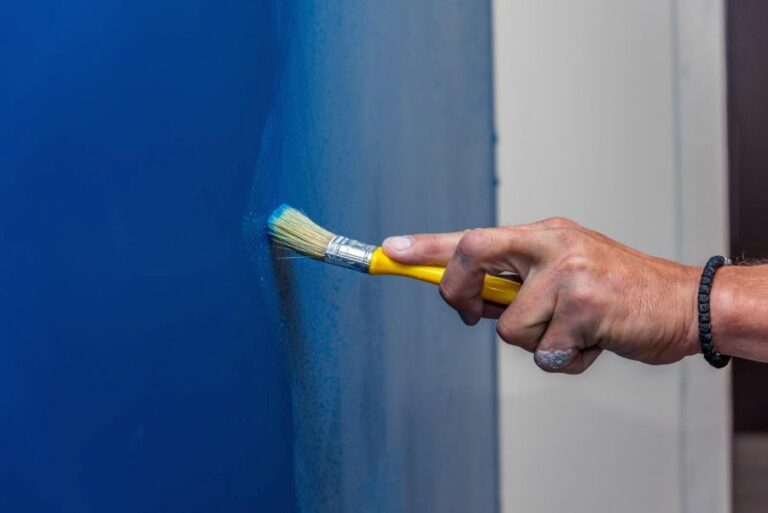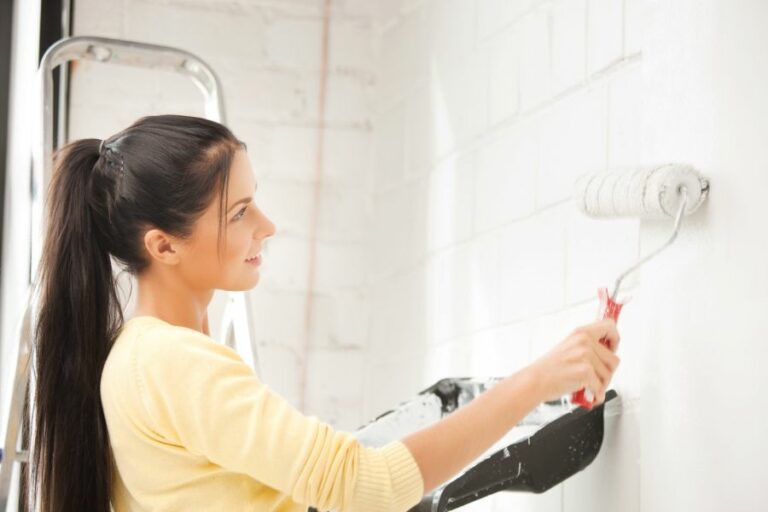Water-Resistant Indoor Paint Options, 25 Things You Should Know
Painting your home can be a rewarding experience, but choosing the right type of paint is crucial for durability and sustainability. Water-resistant indoor paint options are an ideal choice for homeowners looking to protect their walls from moisture-related issues. These paints can help avoid damage from spills, condensation, and steam that could lead to costly repairs in the future.
Water-resistant indoor paint options:
Water-resistant indoor paint options include acrylic paint, latex paint, oil-based paint, and epoxy paint. These paints protect surfaces from moisture, dampness, and potential damage when applied to walls, ceilings, floors, or furniture. Selection depends on factors such as surface type, desired finish, and moisture exposure. Proper application and additional measures, like ventilation and sealing, can enhance water resistance and durability.

Tired of dealing with moisture and water damage on your interior walls? Discover various water-resistant paint options that combat such issues with ease. Read on to explore their features and benefits and bring a fresh and durable makeover to your home.
Contents
- 1 Durable Water-Resistant Indoor Paint Solutions
- 2 Top Waterproof Interior Paint Choices
- 3 Ideal Paint Selection for High Humidity Walls
- 4 Exploring the Existence of Waterproof Paint
- 5 Selecting the Right Water-Resistant Paint
Durable Water-Resistant Indoor Paint Solutions
Water-resistant paint provides an effective solution for protecting surfaces from moisture, dampness, and potential damage. Combining excellent durability with a sleek finish, water-resistant paint can be applied to various surfaces like walls, ceilings, floors, and even furniture.
• Choosing the Right Paint
Selecting the right water-resistant paint depends on factors such as the type of surface to be coated, the desired finish, and the level of moisture exposure. Here are some popular water-resistant paint varieties:
– Acrylic Paint
Acrylic paint is a versatile option that can be used on various surfaces, including walls, ceilings, and furniture. It’s renowned for its superb adhesion and water resistance, which makes it an excellent choice for damp areas like basements, bathrooms, and kitchens.
Acrylic paint dries quickly and exudes low VOCs (volatile organic compounds), imparting a low environmental impact.
– Latex Paint
Latex paint is another popular option, favored for its ease of application and water-based composition. Latex paint is available in a plethora of finishes, including matte, satin, and high gloss.
While not as water-resistant as acrylic, it still offers an adequate level of protection for surfaces that experience minimal moisture exposure.
– Oil-Based Paint
Oil-based paint is a traditional choice known for its durability and water resistance. Due to its composition, oil-based paint takes longer to dry and releases high levels of VOCs.
Moreover, it may also turn yellow over time, particularly when exposed to indirect sunlight. Despite these drawbacks, oil-based paint remains a practical option for high-moisture areas.
– Epoxy Paint
Epoxy paint is a two-component, high-performance paint designed for heavy-duty applications. It is most commonly used to coat concrete floors and walls, offering superior water resistance, durability, and protection against mold and mildew.
Epoxy paint adheres well to most surfaces, but it can be tricky to apply and requires a careful mixing of the two components.
• Tips for Selecting and Applying Water-Resistant Paint
To achieve the best results with water-resistant paint, consider these tips:
- Assess Moisture Levels: Determine the level of moisture exposure to guide the most suitable paint selection. High moisture areas like basements, bathrooms, and kitchens may require specialized paints designed for such environments.
- Surface Preparation: Proper surface preparation is essential for optimal adhesion and finish. Clean the surface thoroughly, removing any dust, dirt, grease, or loose paint. Additionally, fix any cracks or imperfections before applying paint.
- Primer Application: Using a suitable primer is crucial in enhancing the paint’s adherence to the surface, improving the finish, and prolonging its lifespan. Select a primer that matches the paint type (e.g., water-based primer for water-based paint).
- Paint Application: Apply the paint using the appropriate application method like brush, roller, or sprayer. Remember to follow the manufacturer’s instructions and recommendations on drying times, recoat windows, and environmental conditions during application.
- Ventilation and Curing: Proper ventilation is vital when applying paint to encourage fast and even drying. Allow sufficient curing time before exposing the painted surface to moisture.
• Additional Measures for Improved Water Resistance
In addition to selecting the right water-resistant paint, implementing these measures can further bolster the surface’s protection against moisture:
- Installing suitable ventilation and dehumidifying systems in high-moisture areas.
- Properly sealing joints, seams, and cracks to prevent water intrusion.
- Regular maintenance and inspection of the painted surface to identify and address potential issues early.
• In Conclusion
Water-resistant paint offers a practical and long-lasting solution for guarding indoor surfaces against moisture damage.
By selecting the appropriate paint type, carefully preparing the surface, and adhering to best application practices, homeowners can enhance the water resistance and overall durability of their spaces.
Coupling this with other preventative measures, such as proper ventilation and sealing, will further protect surfaces and prolong paint life.
For more information on water-resistant paints and their application, visit the Paint Quality Institute, a reputable and informative source on paint products and best practices.
Top Waterproof Interior Paint Choices
Waterproof paint is the perfect solution for homeowners and building managers seeking to protect their indoor spaces from the potential damages caused by water and moisture.
The use of high-quality waterproof paint can safeguard walls and surfaces against water infiltration, mold and mildew growth, and other moisture-related issues.
• Understanding Waterproof Paint Properties
Before we dive into the top-rated waterproof paint options, it is essential to understand the properties that distinguish these products from traditional paints.
Waterproof paints typically consist of a water-resistant base, with added components such as silicone, elastomeric resins, and other agents to enhance adhesion, durability, and mold/mildew resistance. These formulas provide a long-lasting, watertight seal to interior surfaces.
– Versatility and Application
Waterproof paints are available in various formulations, including acrylic, latex, and epoxy-based options, to cater to specific indoor applications. Knowing the differences between these types helps in selecting the right paint for your needs.
- Acrylic-based paint: Acrylic waterproof paints are water-based, fast-drying, and can be applied to drywall, wood, masonry, and other surfaces.
- Latex-based paint: Latex waterproof paints have better elasticity and flexibility, making it ideal for applications where surface movements and temperature fluctuations are expected, such as basements and bathrooms.
- Epoxy-based paint: Epoxy waterproof paints offer maximum durability and resistance to water, chemicals, and wear, making them perfect for heavy-duty applications such as industrial spaces, commercial kitchens, and garages.
To ensure the best possible outcome, always follow the manufacturer’s instructions regarding surface preparation, application, and drying times.
• Top Waterproof Paint Brands for Indoor Spaces
Having discussed the different types of waterproof paints, let’s now look at some of the best-rated brands and products available in the market today.
– Drylok Extreme Waterproof Paint
Drylok Extreme (from United Gilsonite Laboratories – UGL) is an acrylic-based, low-odor, and low-VOC waterproof paint ideal for masonry surfaces such as basement walls and floors.
Known for its superior performance, easy application, and excellent adhesion, Drylok Extreme can withstand up to 15 PSI of hydrostatic pressure and is resistant to mold and mildew growth.
The paint is available in various colors and can be applied with a brush, roller, or airless spray. Visit ugl.com for more information on this product.
– KILZ Basement & Masonry Waterproofer
KILZ is another well-known brand in the paint industry, offering a range of waterproofing solutions for various indoor applications. The KILZ Basement & Masonry Waterproofer is a premium, latex-based paint that provides a durable, waterproof coating for concrete and masonry walls.
The product can withstand up to 12 PSI of hydrostatic pressure, is alkali-resistant, and inhibits mold/mildew growth. The low-odor, low-VOC paint can be easily applied using a brush, roller, or airless spray. More information is available at KILZ.com.
– Rust-Oleum Watertite Waterproof Paint
The Rust-Oleum Watertite Waterproof Paint is a latex-based formula designed for interior and exterior usage.
It effectively seals concrete, masonry, and other surfaces against water and moisture intrusion. With a hydrostatic pressure resistance of up to 12 PSI, this paint is suitable for various indoor spaces such as basements, bathrooms, and garages.
Rust-Oleum Watertite is also mold and mildew-resistant, ensuring your surfaces stay clean and healthy.
– Zinsser Watertite Waterproof Paint
Zinsser is another reputable brand known for its high-quality and innovative coating solutions. The Zinsser Watertite Waterproof Paint is an acrylic-based, mold and mildew-resistant paint designed for both interior and exterior applications.
It can be used on a range of surfaces, including masonry, stucco, and concrete. This paint offers up to 10 PSI of hydrostatic pressure resistance and provides a smooth, easy-to-clean finish.
• Final Thoughts
Selecting the best waterproof paint for your indoor spaces is crucial in protecting your property from potential water and moisture damage.
Consider factors such as the type of waterproof paint, the area to be covered, and the specific performance properties required for your application. By doing so, you can ensure long-lasting protection and a healthy living environment.
We recommend researching and comparing the different brands and products discussed above, choosing one that best meets your needs and budget.
Additionally, it is essential to follow proper surface preparation and application techniques, as per the manufacturer’s instructions, to achieve the best possible results.
Brand | Name of Waterproof Paint | Features |
|---|---|---|
Rust-Oleum | Perma-White Mold & Mildew-Proof Interior Paint | Self-priming, washable, water-based, long-lasting resistance to mold and mildew |
KILZ | Kitchen & Bath Interior Latex Primer/Sealer/Stainblocker | Designed for high-moisture areas, protects from water and mildew, adheres well to various surfaces |
Zinsser | Watertite Mold & Mildew-Proof Waterproofing Paint | Smooth, bright finish, prevents mold and mildew, easy to apply, designed for waterproofing and sealing |
DRYLOK | Extreme Latex Masonry Waterproofer | Low-odor, flexible, breathable, mildew resistant, and ready to use |
AquaGuard | AquaGuard 5000 Waterproofing Paint | Weather-resistant, mold-resistant, water-based, versatile adhesion, environmentally friendly |
Ideal Paint Selection for High Humidity Walls
High moisture environments, such as bathrooms, kitchens, and basements, can be challenging when it comes to choosing the right paint. It’s crucial to select a paint formula designed to withstand humidity, condensation, and potential mold growth.
• Understanding the Role of Moisture-resistant Paints
Moisture-resistant paints are formulated to provide a durable, protective layer against humidity and dampness. The National Institute of Building Sciences highlights the importance of moisture control in preventing mold growth and maintaining indoor environmental quality.
Using the right paint can play a significant role in managing moisture levels in walls, decreasing the likelihood of structural damage, and maintaining a healthy living space.
• Top Paint Options for High Moisture Walls
When selecting paint for high-moisture walls, look for these features in moisture-resistant paint options:
1. Mildew and Mold Resistance
Mold and mildew can thrive in damp environments, leading to unsightly stains and potential health risks. Paints containing mildewcidal additives or formulated to resist mold growth are essential for high moisture walls.
Recommended Product: Zinsser Perma-White Mold & Mildew-Proof Interior Paint
Zinsser Perma-White is a self-priming paint specifically designed to resist mold and mildew growth. This water-based, low-odor paint provides long-lasting durability and can be tinted to your desired color.
2. Excellent Adhesion and Durability
In high moisture environments, paint should have excellent adhesion properties to ensure it stays in place, even when exposed to water and humidity. It should also be durable enough to resist peeling and blistering.
Recommended Product: Benjamin Moore Aura Bath & Spa
Benjamin Moore’s Aura Bath & Spa is a premium paint line with exceptional adhesion and durability. This waterborne, low-VOC paint is specially formulated for high-humidity environments, providing a beautiful, long-lasting finish that resists mildew and retains its color.
3. Water- and Stain-resistance
Selecting paint with water- and stain-resistant properties will help prevent damage from moisture exposure and increase the longevity of your paint job.
Recommended Product: Sherwin-Williams Duration Home Interior Acrylic Latex
Sherwin-Williams’ Duration Home is a high-performance paint that provides water- and stain-resistant protection. This low-VOC acrylic latex paint is easy to clean and resists mildew growth, making it an excellent choice for high-moisture walls.
• Tips for Painting High Moisture Walls
– Preparing the Surface
Proper surface preparation is essential for ensuring a durable paint job in high-moisture environments. Before applying paint, make sure to:
- Thoroughly clean the walls to remove dirt, grease, and mildew.
- Repair any cracks, holes, or peeling paint by filling, sanding, or scraping as needed.
- Prime the surface, if necessary, especially if you’re painting over a glossy or dark-colored paint.
– Proper Ventilation and Drying Time
When painting high-moisture walls, adequate ventilation is vital for allowing the paint to dry properly and preventing condensation. Open windows and doors or use a ventilation fan during and after painting to ensure adequate airflow.
Follow the manufacturer’s instructions for the recommended drying time between coats.
– Maintenance and Cleaning
Regularly clean and maintain painted surfaces in high-moisture environments to increase the longevity of your paint job. Consider using a mild, non-abrasive cleaner to remove dirt, mildew, and grime.
Periodically inspect surfaces for signs of peeling, blistering, or mold growth, and address any issues promptly.
• Conclusion
Selecting the best paint for high-moisture walls is crucial to achieving a durable, long-lasting finish that resists mold growth and damage from humidity.
Look for paints specifically designed for high moisture environments, with properties such as mildew resistance, excellent adhesion, and water- and stain resistance.
Finally, remember to properly prepare the surface, ventilate the area during painting, and maintain the painted walls to extend the life of your paint job.
Exploring the Existence of Waterproof Paint
Waterproof paint is a popular topic among homeowners, architects, and paint enthusiasts, and it’s not difficult to understand why. Paint that can effectively protect surfaces from water, moisture, and dampness is indeed an attractive proposition for many.
But does waterproof paint exist, and if yes, how effective is it in providing the desired level of protection?
• The Science Behind Waterproof Paint
Waterproof paint refers to any paint with specific chemical properties that make it durable when faced with water and moisture.
This durability comes from the paint’s unique formulation, which consists of water-resistant additives and an active ingredient that creates a barrier against water ingress.
The United States Environmental Protection Agency provides various guidelines on reducing moisture and dampness in buildings backed by scientific research.
– Types of Waterproof Paint
There are different kinds of waterproof paint on the market, each specifically designed to address distinct types of surfaces or applications. Here are three popular types:
- Masonry Waterproof Paint: Designed for use on concrete, brick, and stonework surfaces, masonry waterproof paint forms a durable, water-resistant barrier that helps prevent moisture ingress into the substrate.
- Waterproof Bathroom Paint: Specially formulated for use in damp and high-humidity areas, this paint protects surfaces from mold, mildew growth, and constant exposure to water in bathrooms, saunas, or changing rooms.
- Elastomeric Waterproof Paint: With elastomeric paint, it functions as a waterproofing paint owing to its flexible, elastic properties. Elastomeric paint expands and contracts with temperature fluctuations and can bridge small cracks, making it ideal for exterior applications.
• Waterproof Versus Water-Resistant Paint
While people often use the terms “waterproof” and “water-resistant” interchangeably, they do not mean the same thing. Waterproof paint implies that the surface painted will be impervious to water ingress.
In contrast, water-resistant paint indicates a certain level of protection against water but doesn’t necessarily ensure complete waterproofing.
For surfaces that require significant waterproofing, like basements, below-grade structures, and swimming pools, specialized waterproofing solutions are necessary. In less critical areas, water-resistant paint may provide adequate protection against moisture and mildew.
• Benefits of Waterproof Paint
There are numerous advantages to using waterproof paint in various applications, including:
- Moisture Protection: The primary function of waterproof paint is to provide an additional layer of protection against water ingress, extending the life of the substrate.
- Mold and Mildew Prevention: Waterproof paint helps inhibit the growth of mold and mildew, which thrive in damp, wet environments. This can contribute to improved indoor air quality and overall health.
- Enhanced Durability: Waterproof paint formulas tend to be more durable than traditional paints, making them ideal for high-traffic areas and surfaces exposed to harsh environmental conditions.
- Aesthetics: Available in a variety of colors and finishes, waterproof paint can enhance the visual appeal of surfaces while providing protection against moisture.
• Drawbacks of Waterproof Paint
Despite its benefits, waterproof paint is not without its shortcomings:
- Limited Waterproofing Capabilities: Waterproof paint alone cannot guarantee complete waterproofing for the substrate. In some cases, additional waterproofing measures, such as membranes or sealants, may be necessary.
- Higher Cost: Waterproof paint tends to be more expensive than traditional paints, which may influence decision-making for budget-conscious consumers.
- Difficulty Removing: The durability of waterproof paints also means they can be more challenging to remove or re-coat when required.
• Tips for Selecting the Right Waterproof Paint
Based on my experience, these points should be taken into consideration when choosing waterproof paint:
- Surface Preparation: Ensure appropriate surface preparation, such as cleaning, fixing cracks or damaged areas, and priming surfaces where necessary for optimal adhesion and performance of waterproof paint.
- Application: Follow the manufacturer’s guidelines for correct application, including the recommended number of coats, drying times, and types of brushes or rollers to use.
- Compatibility: Make sure the paint is suitable for your surface material, whether it’s concrete, brick, metal, or wood.
In conclusion, while no paint can guarantee absolute waterproofing, specialized waterproof paint products can certainly enhance the water resistance and durability of surfaces.
Understanding the distinction between water-resistant and waterproof paint, as well as the specific needs of your surfaces, will help you make an informed decision when selecting the right paint for your particular application.
Selecting the Right Water-Resistant Paint
Paints are an essential aspect of maintaining and beautifying our living and workspaces. With the myriad of paint options available in the market, choosing the right type can be overwhelming.
• Understanding Water-Resistant Paints: Benefits and Applications
Water-resistant paints are specifically designed to provide an extra layer of protection against damage caused by moisture, humidity, and potential water infiltration. These paints come with a range of benefits that make them a popular choice for use in various spaces and projects:
- Durability: They form a tough, long-lasting coating that resists cracking, blistering, and peeling.
- Mildew and Mold Resistance: Water-resistant paints help prevent the growth of molds and mildew on the coated surface, ensuring a healthy living environment.
- Easy to Maintain: These paints can be cleaned with ease, as they do not absorb water and dirt.
- Enhanced Aesthetics: Water-resistant paints often provide a smooth, glossy finish to the surface, which adds to the appearance of the space.
Water-resistant paints are ideal for use in areas exposed to moisture and humidity, such as bathrooms, kitchens, basements, and exteriors of buildings.
• Different Types of Water-Resistant Paints
There are a few main types of water-resistant paints you can choose from. Each type offers unique characteristics, making them suitable for various applications:
– Acrylic Paints
Acrylic paints are water-based, which makes them ideal for use on surfaces exposed to water. They possess excellent adhesion properties and provide a waterproof, flexible finish when dried. This paint type is easy to apply and clean up, dries quickly, and is resistant to fading and yellowing.
– Epoxy Paints
Epoxy paints are high-performance, heavy-duty coatings that provide a durable, waterproof, and chemical-resistant finish. They are primarily used on concrete and masonry surfaces, such as floors and walls.
Epoxy paints are ideal for areas that require heavy-duty protection, like commercial and industrial spaces, garages, and basements.
– Elastomeric Paints
Elastomeric paints are exterior-grade water-resistant coatings that provide an elastic, flexible finish that helps bridge hairline cracks and expand/contract with the surface to prevent cracking. These paints are perfect for use on exterior walls, stucco, brick, and other masonry surfaces.
– Silicone-Based Paints
Silicone-based paints use silicone resin to form a water-repellent and durable coating. They provide an excellent waterproof finish, resist mildew and mold growth, and have good adhesion properties. Silicone-based paints are suitable for interior and exterior surfaces, such as walls, ceilings, and window frames.
• Recommended Water-Resistant Paint Brands
There are various brands offering top-quality water-resistant paints that cater to individual needs and budgets. Here are some top recommendations based on performance and reliability:
- Sherwin-Williams: Renowned for their quality products, Sherwin-Williams offers a range of water-resistant paints, including their popular Duration Home and Emerald lines.
- Benjamin Moore: The brand’s Aura Bath & Spa is a high-performance, durable, and water-resistant paint designed specifically for bathrooms and humid spaces.
- Rust-Oleum: Rust-Oleum’s EpoxyShield is a top choice for providing a durable, water-resistant finish to your garage, basement, or industrial floor.
- BEHR: Known for their high-quality paint products, BEHR’s Premium Elastomeric Masonry, Stucco, and Brick Paint is an excellent option for water-resistant exterior surfaces.
• Application Tips for Water-Resistant Paints
Achieving the best results with water-resistant paints requires proper surface preparation and application techniques. Here are some essential tips to ensure a successful paint job:
- Clean the Surface: Remove all dust, dirt, grease, and loose paint from the surface using a wire brush, scraper, or power washer.
- Repair and Seal Cracks: Fill any cracks, holes, or broken areas in the surface using a suitable patching material. For exterior elastomeric applications, use caulk to seal joints and seams.
- Prime the Surface: Apply a water-resistant primer on the surface to ensure good adhesion and enhance the paint’s durability.
- Apply Multiple Coats: For maximum protection, it is recommended to apply at least two coats of water-resistant paint, allowing the paint to dry thoroughly between coats.
- Observe the Weather: Avoid painting on rainy or humid days, as moisture can adversely affect the paint’s performance.
In conclusion, selecting the right water-resistant paint is essential for protecting your surfaces against damage caused by constant exposure to moisture and humidity.
By considering the different types of water-resistant paints, their applications, and our recommended brands, you can make an informed decision and achieve the desired results in your home or commercial space.
For further reading on selecting and using paints based on your specific needs, check out the EPA’s Paint and Coating Guide. This guide provides in-depth information on various paint types and their applications, enabling you to make the best choice for your project.

